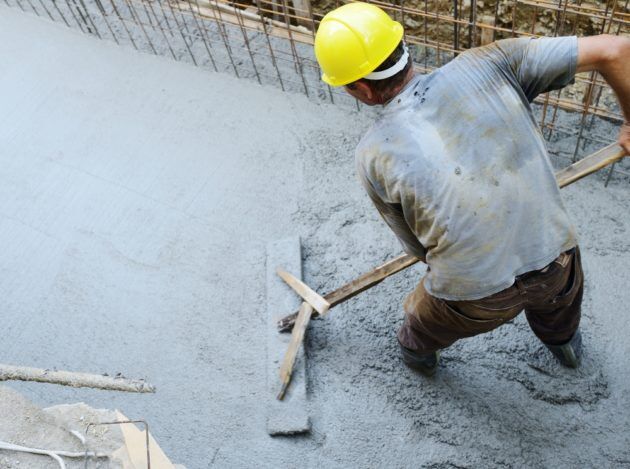Comprehensive Guide to Concrete: From Installation to Finishing Touches
Unveiling the Eco-Friendly Advantages of Utilizing Recycled Concrete in Sustainable Building And Construction Practices
In the world of lasting building and construction techniques, the application of recycled concrete stands as an essential yet usually undervalued resource. Past its standard applications, recycled concrete offers a myriad of green advantages that extend much past the boundaries of traditional construction products. From reducing environmental effect to improving cost-efficiency, the implications of integrating recycled concrete in sustainable structure methods are significant. This functional material not only addresses pressing ecological worries however additionally offers a viable remedy to the obstacles dealt with by the building and construction market at huge.
Environmental Advantages
Undoubtedly, one of the most substantial benefits of using recycled concrete is its positive influence on the environment. By incorporating recycled concrete into construction methods, there is a significant reduction in the need for brand-new basic materials, bring about preservation of natural resources. This process aids in maintaining aggregates, water, and energy that would certainly have been used in generating new concrete. Additionally, making use of recycled concrete reduces the amount of waste being sent out to garbage dumps, thereby decreasing ecological air pollution and relieving the strain on landfill abilities.

In contrast, recycled concrete has a reduced carbon impact as it decreases the demand for new concrete production. Generally, the ecological advantages of using recycled concrete are substantial and play an important role in promoting eco-friendly construction methods.
Cost-Efficiency
Achieving cost-efficiency is a critical factor to consider when analyzing the utilization of recycled concrete in building jobs. One of the crucial benefits of using recycled concrete is its cost-effectiveness compared to standard concrete.
Moreover, using recycled concrete can bring about cost savings in landfill expenses by diverting concrete waste from disposal websites. This not only reduces the ecological effect yet also removes the expenses connected with waste removal. The longevity and performance of recycled concrete are comparable to conventional concrete, guaranteeing that expense financial savings do not compromise the top quality of the building and construction.
Sturdiness and Toughness
Recycled concrete offers equivalent, if not remarkable, resilience and strength residential or commercial properties to conventional concrete - Concrete. Via improvements in processing methods and top quality control, recycled concrete can satisfy or exceed the performance requirements of traditional concrete.

Waste Reduction
Reliable waste decrease practices play a vital role in the lasting usage of resources within the building and construction industry. Waste reduction is an essential advantage that adds significantly to environmental conservation when it comes to using recycled concrete. Traditional building techniques frequently produce considerable amounts of waste, specifically in the type of concrete rubble from demolition websites. By incorporating recycled concrete into building and construction projects, this waste is repurposed and diverted from landfills, lowering the total environmental impact of building activities.
Additionally, the usage of recycled concrete can lead to cost savings for construction projects, as it is usually extra economical than sourcing and carrying new materials - Concrete. In conclusion, waste decrease via the use of recycled concrete is a crucial component of sustainable building and construction methods that profits both the atmosphere and the construction sector as a whole.
Energy Conservation
Energy conservation is an essential element of lasting building and construction practices, intending to lower the total power consumption related to structure procedures and products production. When find out here now it pertains to using recycled concrete in construction, considerable power cost savings are attained contrasted to standard concrete manufacturing. The process of generating recycled concrete involves reusing and crushing existing concrete materials, which takes in less energy than mining, handling, and carrying basic materials for brand-new concrete production. Additionally, using recycled concrete can assist reduce the demand for see here virgin aggregate, further lowering the energy-intensive extraction and processing of natural deposits.
Final Thought
In conclusion, the utilization of recycled concrete in sustainable building and construction techniques uses many environmental benefits, cost-efficiency, toughness, toughness, waste reduction, and power conservation. By incorporating recycled concrete right into building and construction jobs, we can add to an extra eco-friendly and sustainable future. It is vital for the building and construction market to prioritize the usage of recycled products to help decrease the environmental impact of building and construction tasks.
One of the key benefits of making use of recycled concrete is its cost-effectiveness compared to typical concrete.Furthermore, the use of recycled concrete can lead to cost savings in garbage dump prices by diverting concrete waste from disposal sites. The longevity and performance of recycled concrete are equivalent to conventional concrete, guaranteeing that price financial savings do not jeopardize the high quality of the building and construction.
